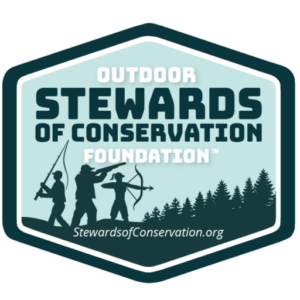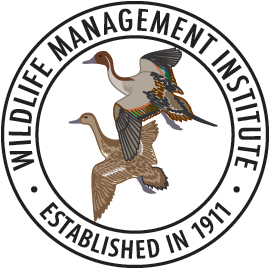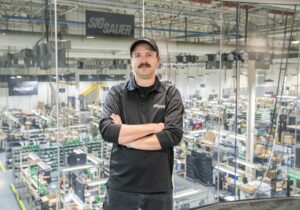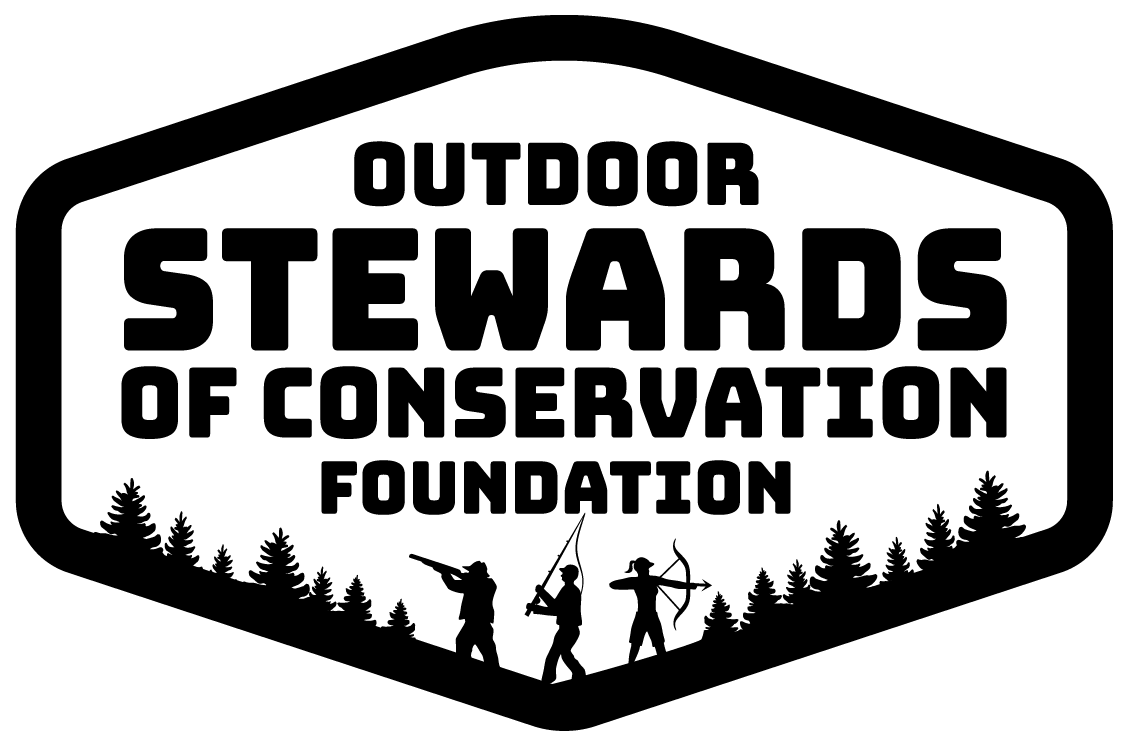


Shareable media promoting conservation from the Outdoor Industry Communication Council (OICC) – see below for more details.
View from the Firearm Assembly Line
In a previous OICC installment, we detailed the $80 billion annual contribution the firearms industry makes to the national economy. But the industry is composed of people, each contributing their skills, knowledge, and time to a particular task. We wanted to get to know one of the people whose work—and work ethic—is responsible for the industry’s horsepower. Here’s a look at the work, and employment trajectory, of Sig Sauer’s Jack Guillemette.
Jack Guillemette never imagined he’d spend a career building guns. That was his brother’s thing, a die-hard New Hampshire hunter who got a job on the production line at the Sig Sauer plant up the road. For his part, Jack was more into fixing cars.
But after a few years, Guillemette’s brother convinced Jack to come to Sig for a job interview, and before he knew it, Jack was working second shift, building P238s and P938s, Sig Sauer’s compact handguns.
“I loved how simple and satisfying it was,” says Guillemette. “I could work with my hands, and learn new things all the time.”
Guillemette’s first jobs were putting together magazine catches, assembling slides and mainsprings, then prepping firearm subassemblies for the assembly line.
“Once I was proficient with the fundamentals of that particular firearm, I ended up jumping on the assembly line,” he says. “At the time, it was a 4-person line, and I learned each station. Each time I learned how to build a new gun, I got more into that gun, how it’s put together, how it works, and how it shoots, and using Sig’s [employee] discount, I ended up buying guns—my first was a 1911 Carry Commander—and then taking classes at the Sig Academy. Through that whole process, I became a shooter.”
Guillemette took basic firearms handling courses, but then stepped up to Pistols 101, Rifles 101, then took an armorer’s class, then a low-light rifles course and a cold-weather carbine course.
“The company makes it easy for employees to take these classes, but I figure that if I’m working for this company and I’m passionate about my work, then I want to represent Sig in the right way,” says Guillemette, who earlier in his career was called to travel the world
as part of a rapid-response service team. “I want to learn everything I can about the guns we make and how to use them. It’s made me a better assembler as a result.”
How does being an experienced and educated shooter make Guillemette a better assembler?
“I can better diagnose a gun’s operation,” he says. “I have a feel for the trigger pull, what it should feel like, and how the gun should operate in your hand, how to diagnose malfunctions. The more you shoot and handle guns, the better your ability to catch some things when you’re at the end of the [assembly] line, the last guy finalizing that firearm and putting it on the range.”
Guillemette’s career has progressed from assembler to supervisor and he is currently the assembly manager for all Sig’s firearms production lines.
“I feel like I grew up with this company, and I was able to get in at a good time,” says Guillemette. “They recognized hard work and gave me the tools to grow and to be a good leader. I developed a work ethic where I’d watch each manager and each lead and each supervisor and pick out what I needed to learn to and to succeed and kept pushing. At the end of the day, what we do is manufacturing. It can be monotonous and repetitive. But I’m a competitive person, and I want to build guns faster and more perfectly than the next guy in order to stand out.”
That’s a good work habit no matter the job. So what does Guillemette aspire to?
“It’s always my boss’s job,” he laughs. “Or my boss’s boss’s job. I could see myself as a vice president someday, maybe even CEO. What’s really cool about this company is that employees on the [assembly] line get to interact with executives on a regular basis. So part of thinking about my future is learning what they needed to learn to get where they are.”
Guillemette says Sig Sauer has nurtured a culture that allows an assembly line employee to imagine themselves in upper-level management.
“From our CEO and executive staff all the way down, there’s a constant expectation to get better every day, to learn something new and to keep pushing,” says Guillemette. “But there’s also a commitment at every level to make sure we have a great place to work and that employees feel appreciated. I have people from all walks of life on assembly lines, from young people just getting started to older people who are maybe semi-retired but who want to work on a limited basis. We have a clean facility. Having a clean place to work is
important. I can tell you that coming from the auto industry where I had salt and mud dripping on my head all day” as he was working on and underneath cars.
A culture built around passion and respect combined with a clean work space promotes employee longevity, which has a multiplier effect on product quality.
“The longer we have an employee who works assembly, the more I can teach them and the more valuable they become to the company,” observes Guillemette. “I have folks on my team who can build every gun that Sig makes. That was actually my goal when I started here. I wanted to learn how to build every one of our guns. It took me two and a half years to do that, but I did it. We have 30 more guns in our catalog than when I started, but I can still build every one of them.”

About the Outdoor Industry Communication Council (OICC):
Formed around the commitment to educate all Americans about the origins of conservation funding in America, the Outdoor Industry Communication Council (OICC) is managed by Outdoor Stewards of Conservation Foundation (OSCF) and Wildlife Management Institute (WMI). OICC works with outdoor writers to develop informative content that is available to all outdoor organizations and media at no cost. A primary goal of the OICC is to better inform and promote the positive contributions that wildlife agencies, industry manufacturers, NGO’s and end users such as hunters, anglers, trappers and target shooters make to conservation. Outdoor organizations interested in conservation are welcome to use any OICC content to expand the reach of messages created by the OICC. To become a member of the Outdoor Industry Communication Council, contact Jim Curcuruto of OSCF
(203) 450-7202
jim@stewardsofconservation.org or Jon Gassett of WMI at (502) 330-9025 jgassett@wildlifemgt.org. There are no costs involved to become a member of the OICC.
Members may utilize OICC materials as they see fit with no restrictions. For additional information visit https://www.outdoorstewards.org/outdoor-industry-communication-council-oicc/
This project is funded by the Multistate Conservation Grant Program (F23AP00404), a program supported with funds from the Wildlife and Sport Fish Restoration Program and jointly managed by the Association of Fish and Wildlife Agencies and the U.S. Fish and Wildlife Service.
